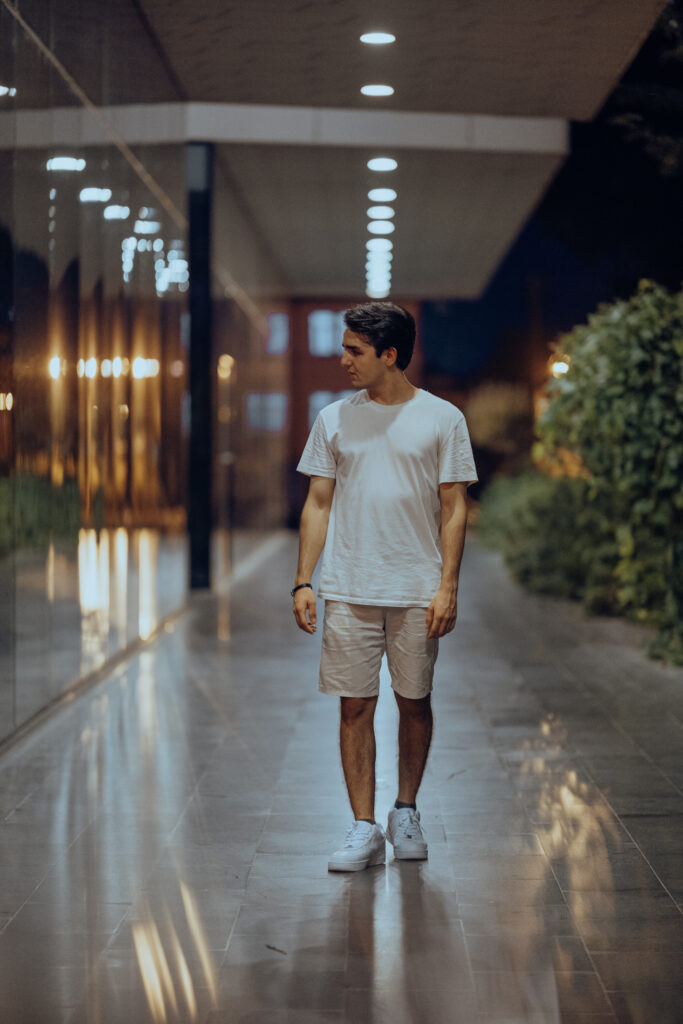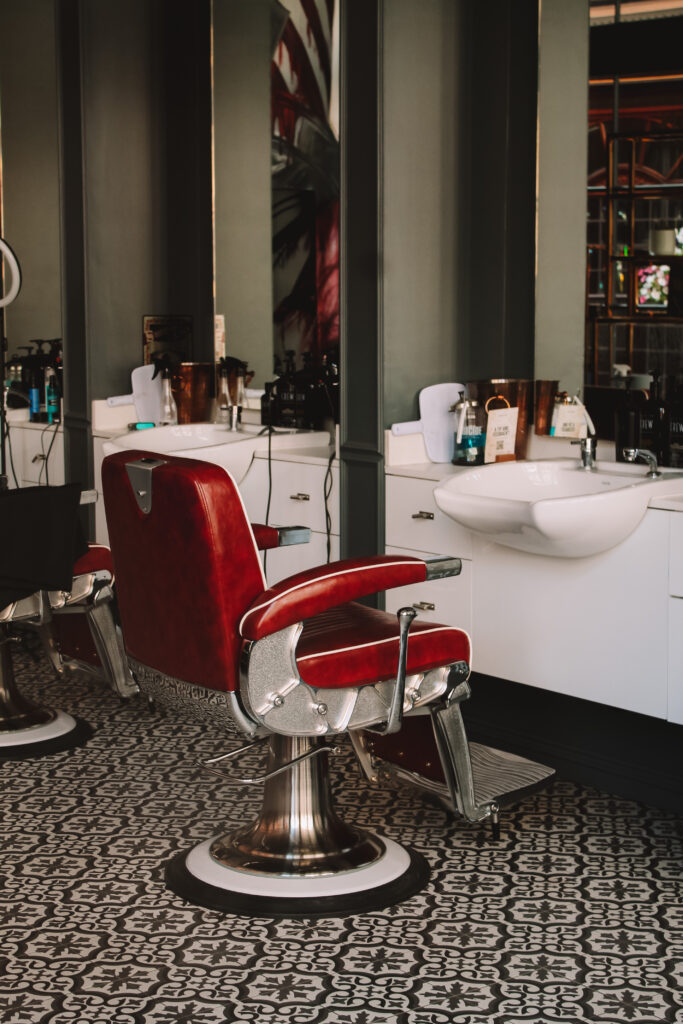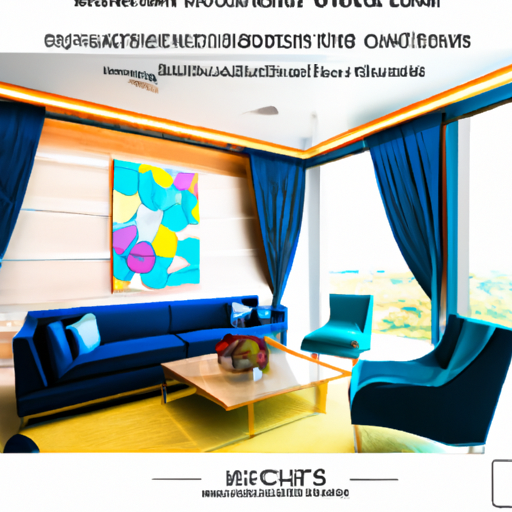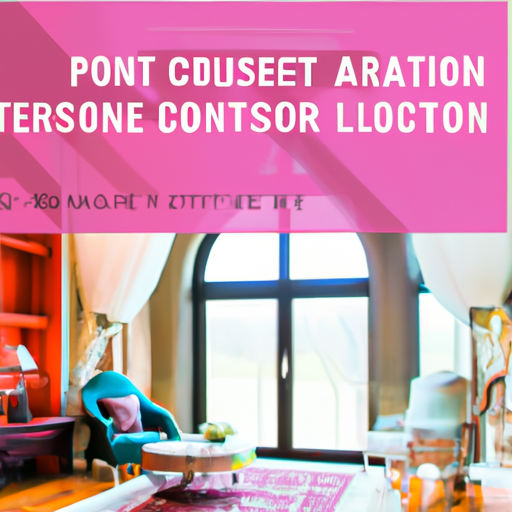
Thinking about adding a pop of color to your living space? Wondering if contrasting colors can make a room really stand out? You’ve come to the right place! In this article, we’ll explore whether using contrasting colors effectively in a room is a design choice that can transform your living space into a vibrant and visually appealing haven. So, if you’re ready to add a touch of excitement to your home, let’s dive into the world of color and design!

Introduction
When it comes to designing a room, color plays a crucial role in creating the desired ambiance and atmosphere. Contrasting colors, in particular, can add an element of visual interest and excitement to any space. But before diving into the world of contrasting colors, it’s important to first understand what they are and how they work.
Understanding Contrasting Colors
Contrasting colors are hues that are positioned opposite each other on the color wheel. They create a strong visual impact and stand out against each other due to their stark differences in hue, value, and saturation. There are different types of contrasting colors that can be used to achieve various effects in a room.
Primary Colors
Primary colors refer to the three basic colors: red, blue, and yellow. These colors cannot be created by mixing other colors and are the foundation for all other colors on the color wheel.
Secondary Colors
Secondary colors are the result of mixing two primary colors together. These colors include orange, green, and purple. They provide a vibrant and energetic look when used in contrast.
Complementary Colors
Complementary colors are pairs of colors that are directly opposite each other on the color wheel. Examples of complementary color pairs include red and green, blue and orange, and yellow and purple. When placed next to each other, these colors create a high level of contrast and can be used to make a bold statement in a room.
Analogous Colors
Analogous colors are groups of colors that are located next to each other on the color wheel. These colors share a similar undertone and create a harmonious and cohesive look when used together. Using analogous colors can create a subtle contrast while maintaining a sense of unity in a room.
The Effect of Contrasting Colors
Contrasting colors have a powerful impact on the overall look and feel of a room. By strategically incorporating contrasting colors, you can achieve various effects and enhance the visual appeal of your space.
Creating Impact and Drama
Using contrasting colors can create a sense of drama and make a room visually striking. Bold color combinations like black and white or red and green can instantly grab attention and create a focal point in a space. This can be particularly effective in areas such as the living room or dining room, where you want to make a strong visual statement.
Enhancing Visual Interest
Contrasting colors can add depth and dimension to a room by highlighting different elements and architectural features. By using contrasting colors on walls, furniture, and decor items, you can draw attention to specific areas and create a visually interesting and dynamic space.
Setting a Mood
Contrasting colors can also be used to set the mood and atmosphere of a room. Warm contrasting colors like red and yellow can create a cozy and inviting feeling, perfect for spaces like the bedroom or living room. On the other hand, cool contrasting colors like blue and green can evoke a sense of calm and tranquility, making them suitable for areas like the bathroom or home office.
Considerations for Using Contrasting Colors
While contrasting colors can be a great addition to any room, there are some considerations to keep in mind to ensure the color scheme works well within the space.
Room Size
The size of the room should be taken into account when choosing contrasting colors. In smaller rooms, using highly contrasting colors may make the space feel cramped and overwhelming. On the other hand, larger rooms can handle bolder and more contrasting color combinations without feeling overcrowded.
Natural Light
The amount of natural light in a room can significantly affect the way colors appear. Rooms with ample natural light can handle bold and contrasting colors, while rooms with limited natural light may benefit from softer and more subtle contrasts.
Function of the Room
Consider the function of the room and the mood you want to create when choosing contrasting colors. For example, vibrant and energetic color combinations may work well in a kitchen or playroom, while calm and soothing colors may be more appropriate for a bedroom or reading nook.
Existing Color Palette
Take into account the existing color palette of the room when incorporating contrasting colors. Ensure that the contrasting colors you choose complement the existing colors rather than clash with them. This will help achieve a cohesive and well-balanced look in the space.
Personal Preferences
Ultimately, the choice of contrasting colors should reflect your personal style and preferences. Don’t be afraid to experiment and choose colors that resonate with you. After all, it’s your home, and the most important thing is that you feel comfortable and happy in the space.

Choosing the Right Contrasting Colors
When it comes to choosing the right contrasting colors, understanding the basics of the color wheel and color schemes can be helpful.
Color Wheel Basics
The color wheel is a visual representation of the relationships between colors. It can be divided into warm colors (reds, oranges, and yellows) and cool colors (blues, greens, and purples). By understanding the color wheel, you can identify complementary, analogous, or triadic color schemes, which consist of colors that work harmoniously together.
Using Color Schemes
Color schemes provide a guideline for selecting contrasting colors that work well together. Some common color schemes include monochromatic (variations of a single color), complementary (opposite colors on the color wheel), analogous (colors next to each other on the color wheel), and triadic (three colors equally spaced on the color wheel). Experimenting with different color schemes can help you find the perfect contrasting colors for your space.
Exploring Warm and Cool Contrasts
Warm and cool contrasting colors can create different effects in a room. Warm contrasts, such as red and yellow, can evoke energy and excitement, while cool contrasts, like blue and green, can create a calming and soothing atmosphere. Consider the mood you want to achieve and choose warm or cool contrasts accordingly.
Playing with Different Intensity Levels
Contrasting colors can also vary in intensity. High-intensity contrasts, such as vibrant red and green, create a bold and energetic look. On the other hand, low-intensity contrasts, like pastel pink and mint green, offer a softer and more subtle effect. Experimenting with different intensity levels can help you find the perfect balance for your space.
Creating Harmony with Contrasting Colors
Contrasting colors can work together harmoniously by considering a few key principles of design.
Balance and Proportion
Achieving a sense of balance and proportion is crucial when using contrasting colors. Create a visual equilibrium by distributing the contrasting colors evenly throughout the space. This can be done by incorporating the contrasting colors in furniture, accessories, and artwork.
Using Neutral Anchors
Neutral colors such as white, black, gray, or beige can act as anchors and help balance out the contrasting colors. Using neutral colors for larger elements like walls or flooring can create a cohesive and harmonious backdrop for the contrasting colors to shine.
Layering Colors
Layering different shades and tones of the contrasting colors can create depth and visual interest. Utilize different textures, patterns, and materials to add dimension and make the colors pop even more.
Maintaining a Consistent Theme
To ensure a cohesive look, choose a consistent theme or style and apply it throughout the space. This will tie the contrasting colors together and create a unified aesthetic. Whether it’s modern, traditional, eclectic, or minimalistic, maintaining a consistent theme will help create a well-curated and visually pleasing room.

Contrasting Colors for Different Room Types
Contrasting colors can be used effectively in various rooms throughout the home. Here are some ideas for different room types:
Living Room
In the living room, contrasting colors can create a vibrant and welcoming atmosphere. Consider using warm contrasts like deep red and mustard yellow for a cozy and inviting space. Alternatively, cool contrasts like navy blue and light gray can create a sophisticated and elegant look.
Bedroom
In the bedroom, contrasting colors can set the mood for relaxation and comfort. Pairing soft lavender with pale yellow or light green can create a serene and peaceful atmosphere. For a more dramatic effect, try combining deep purple with gold or silver accents.
Kitchen
Contrasting colors in the kitchen can add energy and excitement to the space. Consider using contrasting colors like blue and orange or red and green for a lively and stimulating environment. If you prefer a more subdued look, opt for contrasting shades of gray or black and white for a modern and sleek aesthetic.
Bathroom
In the bathroom, contrasting colors can create a spa-like atmosphere. Consider using cool contrasts like light blue and white or green and beige to evoke a sense of calm and tranquility. For a more striking look, try pairing navy blue with gold or silver accents.
Home Office
In the home office, contrasting colors can enhance productivity and focus. Consider using bold contrasts like black and white or red and black for a modern and sleek look. If you prefer a softer look, opt for contrasting shades of gray or light blue for a more calming and serene environment.
Contrasting Colors with Different Styles
Contrasting colors can be incorporated into different interior design styles, each with its own unique look and feel.
Modern/Contemporary
In modern or contemporary spaces, contrasting colors can create a sleek and sophisticated atmosphere. Opt for clean lines and bold contrasts like black and white, or experiment with contrasting shades of gray for a minimalist yet impactful look.
Traditional
For a more traditional look, contrasting colors can add depth and richness to the space. Consider using warm contrasts like deep burgundy and golden yellow or cool contrasts like navy blue and cream. Incorporate traditional patterns and textures to enhance the overall aesthetic.
Eclectic
In eclectic spaces, contrasting colors can add a playful and whimsical touch. Mix and match bright and bold colors like pink and lime green or orange and blue to create a vibrant and energetic atmosphere. Don’t be afraid to experiment and let your creativity shine.
Minimalistic
Contrasting colors can also be embraced in minimalistic spaces, but in a more subtle and understated way. Stick to a limited color palette and choose contrasting colors with low intensity. Consider using contrasting shades of white and gray or black and cream to create a clean and serene look.
Rustic/Farmhouse
Contrasting colors can add warmth and character to rustic or farmhouse-style spaces. Opt for warm contrasts like deep red and mustard yellow or earthy green and beige for a cozy and inviting atmosphere. Incorporate natural materials and textures to enhance the rustic aesthetic.

Contrasting Colors and How They Influence Perception
Contrasting colors can have a significant impact on the way we perceive a room and its dimensions.
Creating Depth and Dimension
By using contrasting colors, you can create an illusion of depth in a room. Darker colors tend to visually recede, while lighter colors appear to come forward. By incorporating contrasting colors on walls, furniture, and decor items, you can create a sense of depth and make the space feel more expansive.
Making a Room Appear Larger or Smaller
Contrasting colors can also influence the perceived size of a room. Lighter colors reflect more light and can make a space appear larger and more open. On the other hand, darker colors absorb light and can make a space feel smaller and more intimate. By strategically using contrasting colors, you can manipulate the perception of space in a room.
Tips for Using Contrasting Colors Successfully
Here are some tips for effectively incorporating contrasting colors in your space:
Start with Small Accents
If you’re unsure about using contrasting colors, start by incorporating small accents such as throw pillows, artwork, or curtains. This will allow you to test the color scheme and see how it works within your space without making a major commitment.
Balance Bold and Subtle Tones
Find the right balance between bold and subtle tones. Mix contrasting colors with different intensities to create interest and depth while maintaining a cohesive look.
Experiment with Textures
Incorporating different textures can enhance the effect of contrasting colors. Try combining smooth and textured materials to bring out the richness and depth of the contrasting colors.
Get Inspired and Stay Open-Minded
Take inspiration from design magazines, online resources, or even nature itself. Look for color combinations that resonate with you and don’t be afraid to step outside of your comfort zone. Stay open-minded and have fun exploring different possibilities.
In conclusion, contrasting colors can be a powerful tool in transforming a room and creating a desired ambiance. By understanding the basics of contrasting colors, considering key design principles, and experimenting with different color combinations, you can successfully incorporate contrasting colors into any room or interior design style. Remember, the most important thing is to choose colors that resonate with you and make you feel comfortable and inspired in your space. Happy designing!

